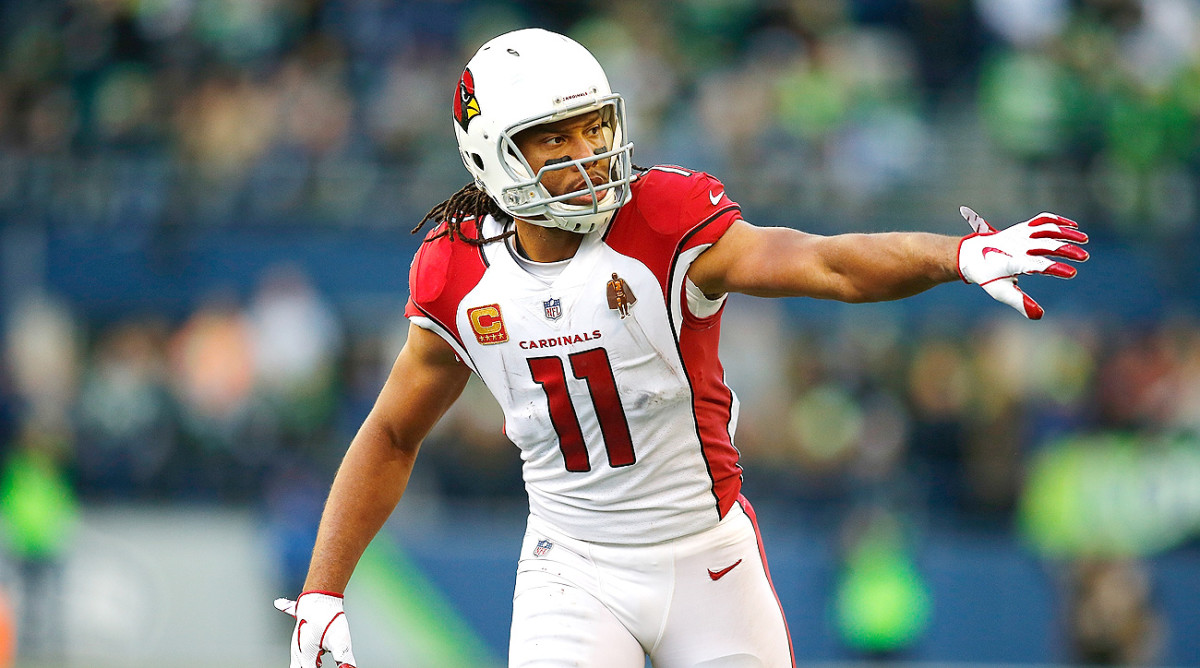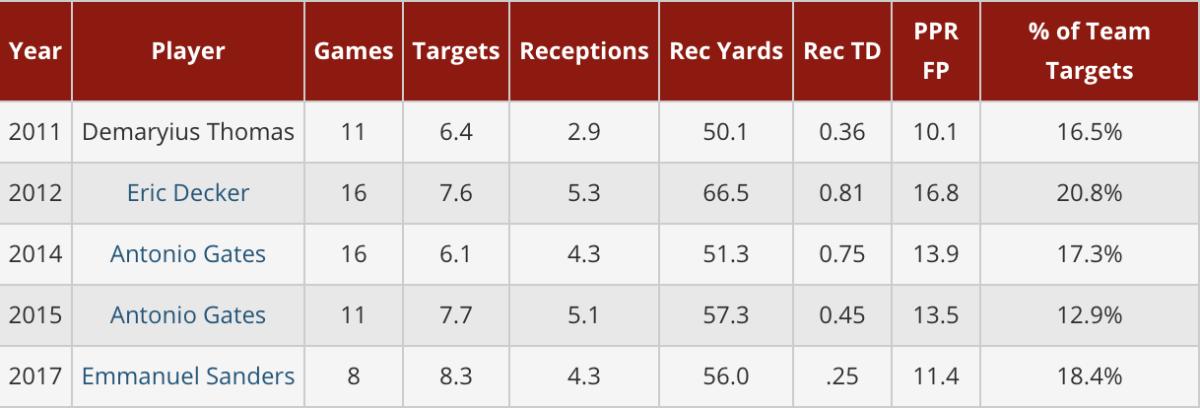How Will New Offensive Coordinator Mike McCoy Shape the Cardinals' Offense?

Following a season where the Arizona Cardinals finished in the bottom 10 in points scored and total yards, head coach Bruce Arians retired, leading to a total reconstruction of the coaching staff. One of the major changes was the addition of offensive coordinator Mike McCoy. Working under the defensively minded new head coach Steve Wilks, McCoy is expected to be in charge of play calling for Arizona in 2018. With a healthy David Johnson returning and Sam Bradford starting the season under center, the Cardinals are hoping to reignite the offensive spark that they had in 2016. The following will examine how McCoy might help lead that charge.

A Snapshot of Mike McCoy’s History
Mike McCoy has spent nine seasons at the NFL level as an offensive coordinator or head coach, but he has been the primary playcaller on just five of those teams. In his first two years in Denver, McCoy ceded play-calling duties to head coach Josh McDaniels, and for two seasons in San Diego, McCoy delegated play-calling duties to Ken Whisenhunt. In his second stint with Denver last season, McCoy was let go after Week 11, so all references to last season will use that time frame.
As is usually the case, player talent usually dictates who touches the ball the most. Where a coach can have a major impact is in how they manage their offense in specific situations, especially as it pertains to game script.
Mike McCoy Pass Rates in Wins vs. Losses

Mike McCoy Situational Pass Rates

*Neutral game script is when the score is within seven points. Negative game script is down by eight or more points. Positive game script is up by eight or more points.
**Projected end-of-season rank
Except for 2011, when Tim Tebow was Denver’s primary quarterback and the Broncos posted the second-highest rush rate of any team since 2010, McCoy has been one of the league's most pass-happy coaches, ranking in the top 10 in neutral passing rate in three of his last four seasons as a primary playcaller. Curiously, McCoy has generally failed to adjust his approach when facing a large deficit, consistently ranking outside the top half of the league in passing rate in negative game script. On a team projected to win 5.5 or six games, depending on which sportsbook you look at, McCoy's tentative nature toward game script could come into play in 2018.
Fantasy Football 2018: QB Primer
McCoy’s Quarterbacks
Mike McCoy QB Per-Game Averages

Determining McCoy’s influence on the quarterback position is quite complicated. He went from one of the worst quarterbacks that the league’s ever seen in 2011 to one of the best of all-time in 2012.
It’s worth noting that McCoy oversaw the two most pass-heavy offenses in San Diego in the Philip Rivers era. Some will point out that Danny Woodhead arrived in San Diego the same year as McCoy—and Woodhead's involvement in the passing game probably has a lot to do with it—but he missed 27 games while McCoy was the head coach (14 while McCoy was calling plays).
Returning to McCoy's attention to game script, Denver ranked ninth in the league in passing attempts through 11 weeks last year, but they led the league in plays ran when down by eight or more. The Broncos were in negative game script for 322 plays after 11 weeks, one of two teams with at least 300 such plays and 60 more (nearly a full game's worth) than the third-ranked team.
Fantasy Football 2018: Running Back Primer
McCoy’s Running Backs
Mike McCoy Primary RB Per-Game Averages

Mike McCoy Team RB Per-Game Averages

Whether by design or happenstance, McCoy has never offered a single running back the workload that we would expect of a true feature back. Even in Willis McGahee’s Pro Bowl 2011 season, he accounted for a backfield touch share that ranked just 15th among all backs.
What McCoy has lacked in terms of feeding a single back, he’s made up for in creating a large backfield pie from which his backs get to eat. McCoy's backfields have averaged 59.3% of total team touches, a touch share that would have ranked ninth among running backs last year. In three of his seasons as a playcaller, McCoy has offered his running backs more than 60% of his team’s touches, a number that would have ranked in the top 10 in three of the last four seasons.

McCoy’s Pass-Catchers
Mike McCoy Primary Receiver Per-Game Averages

*In 2015, running back Danny Woodhead led the Chargers in targets and receptions.
Mike McCoy Secondary Receiver Per-Game Averages

Regardless of who the identity of the primary pass-catcher in a McCoy offense, there’s always been a player who has commanded a healthy target share. Keenan Allen missed two games in 2014, but was on pace to see more than 24% of the Chargers’ targets that year; in 2015, a full season would likely have allowed Allen to see comfortably better than a quarter of San Diego’s targets.
McCoy seemingly has made a concerted effort to keep his tight ends involved. Even with Antonio Gates playing just 11 games in 2015, and no outstanding talent at the position in Denver, McCoy’s tight end units have ranked in the top 12 in the league in positional target share three times. They have also finished seventh or better in team tight end PPR fantasy points in three seasons.
Fantasy Football 2018: Defense and Special Teams Primer
What It All Means for the Cardinals in 2018
As a coach who slants toward the pass taking over a team projected to finish near the bottom of the league in the standings, McCoy should lead one of the most pass-heavy offenses in the league in 2018. While McCoy hasn’t been as sensitive to game script as other coaches, a passing rate above 60%—a number that just six teams hit in 2017—is within the range of outcomes for this squad.
Quarterback
Arizona drafted Josh Rosen with the 10th overall pick in April’s draft, and he will compete with Sam Bradford to be the Week 1 starter. Whether it’s the conservative veteran or the rookie, neither figure to be draftable fantasy assets come August. The most glaring change this year figures to be the lack of the deep ball. Bruce Arians consistently led the league in deep-ball passing (thrown 15-plus yards downfield) rate as a playcaller, while McCoy’s quarterbacks have consistently finished below the league average in that department. If Bradford wins the starting job, shorter passes are a near certainty. Just one quarterback has thrown deep at a lower rate than Bradford over the last five seasons.
Running Backs
The one position where McCoy’s tendencies figure to have little impact, at least in terms of snap rates or touch share, is at running back. While McCoy has traditionally opted for a committee approach to his backfields, David Johnson is one of the few true workhorse, game-script-resistant backs in the league. When fully healthy in 2016, Johnson accounted for a league-high 80% of the backfield touches. Given McCoy's history of high running back usage on the team level and Johnson's ability to catch the ball, he is a candidate to lead the league in touches despite being on a team not expected to contend.
What Can Brian Schottenheimer's Past Tell Us About the Seahawks' Future?
Receivers
One constant in McCoy’s offense had been a pass-catcher with a high target share, and that trend should continue in 2018 with Larry Fitzgerald as the primary receiver. Fitz showed no signs of aging last season, accounting for 27% of the Cardinals targets, the seventh-highest target share of 2017. With little competition for targets outside of Johnson, expect the 15th-year receiver to command at least a quarter of Arizona’s targets again.
The role of the third pass-catcher is up for grabs, and it could be a valuable role on a team that will find itself forced to throw quite often. Rookie Christian Kirk is currently penciled in as the team’s No. 2 WR, but rookie pass-catchers typically progress slowly. Two players to monitor this offseason are Brice Butler and Ricky Seals-Jones. Since coming into the league, Butler’s 8.85 yards per target ranks 19th out of 112 active wide receivers with at least 100 targets. We know McCoy likes to get his tight ends involved, too, and Seals-Jones led tight ends in targets per snap in 2017, albeit on just 132 snaps.
